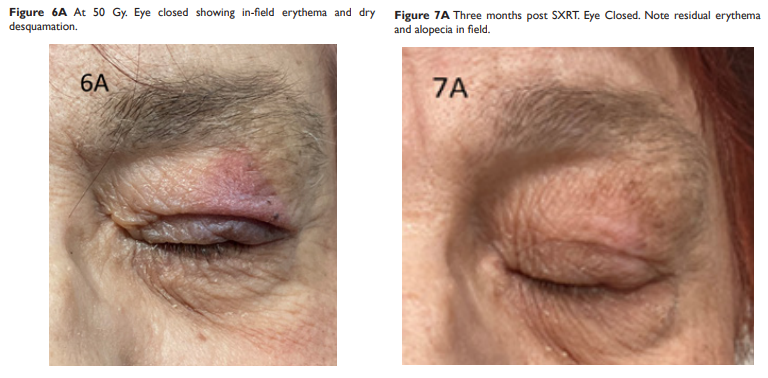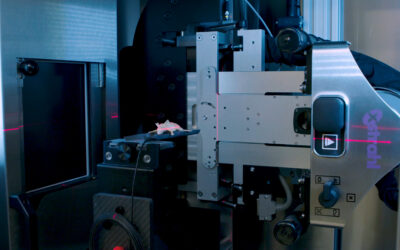It can be difficult to treat cancer of the eyelid. Treatment with surgery often leads to tissue loss. Superficial radiotherapy can be used, but typically involves a topical anesthetic and the user of an internal eye shield, which can present risks and challenges during treatment.
Recently, practitioners developed a technique to treat eyelid cancer with radiotherapy, without the use of an internal eye shield. Below is a description of the technique.
“In this technique, when treating a selected cooperative patient, the anterior chamber is rotated on the globe by the patient to our left, out of the primary beam. The anterior chamber is protected by rotation out of the beam. Only the sclera is in the primary beam. Nothing rests on the cornea except the normal eyelid. There is no need for an IES. The eye is closed, that is, eyelids are together. There is no protruding IES handle.”

Treatment delivery with the 100 kV beam is typically around one minute. The short time frame allows the patient to comfortably keep their eyes closed and follow treatment instructions. Practitioners also utilized custom 3D printed external shields to offer adequate protection to surrounding structures.
A recent publication highlighting this technique, A technique for external beam radiotherapy to the eyelid without the need for an internal eye shield, featuring two cases. Case 1 used definitive superficial radiotherapy for lentigo maligna of the lower eyelid. Five months post-treatment, the patient reported no change in eye function from baseline, and had no LM eight months post-treatment.
Case 2 utilized post-operative radiotherapy for sebaceous cell carcinoma (SebC) of the upper eyelid. Thirty 60Gy fractions were delivered five times per week with 100kV superficial radiotherapy. The patient did report some dryness after four months, which was successfully treated with punctal plug and lubricants. This patient also showed no change in eye function following treatment.

Practitioners determined the non-IES technique to be a safer, quicker, and simpler way to treat eyelid cancer compared to using an IES. There is a higher risk of conjunctivitis, which responds well to topical treatments. Learn more in the original publication here.







